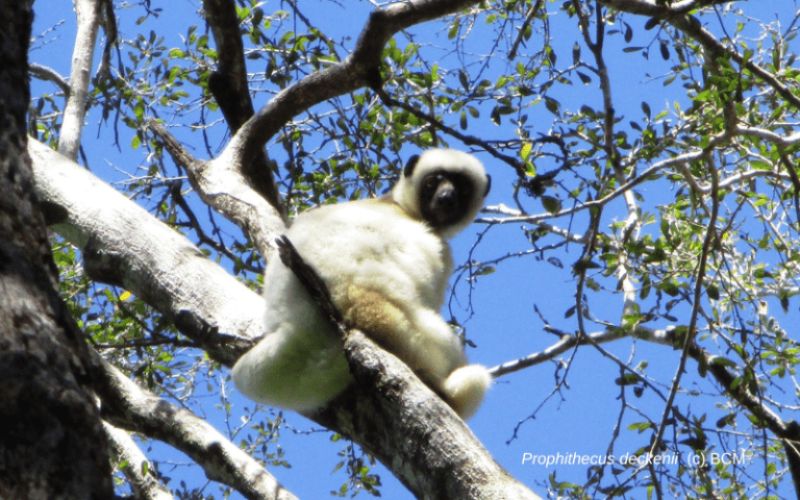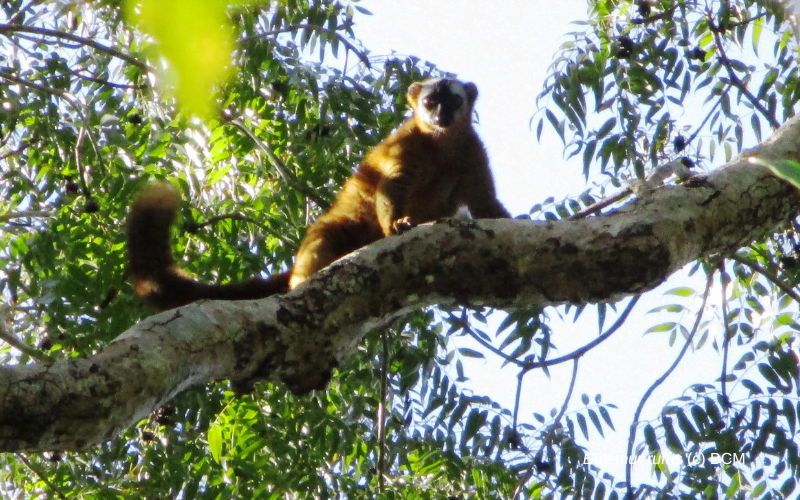
“Lemurs: A unique national heritage, let’s protect their habitats” is the theme adopted for the celebration of the 2022 National Lemur Day. The Day will be celebrated in the Menabe Region (Western Madagascar) on October 28. Remember that the protected area of Menabe Antimena is home to the Microcebus Berthae, the world smallest lemur which is critically endangered.
If deforestation is the major cause of the lemurs’ disappearance, hunting for consumption follows closely. In the protected area of Beanka (Western Madagascar, Melaky Region), the manager BCM has succeeded in a major challenge: to eradicate local consumption of lemurs.
From a tradition ….
Before 2010, the populations of certain localities around Beanka protected area would consume lemur meat as a tradition. On the one hand, the zebu is rather considered as a property necessary for agriculture. On the other hand, acts of banditry have reduced the number of zebus.
“In April, lemurs were usually trapped. Then, they used to be released and followed in order to locate their anchorage place. A couple of months later, at rice harvest time, they used to be captured and killed. Then, their meat was prepared and served for the festivities of the first rice harvest (the Satam-bary),” says Mr. Randalana Roger, a manager of the protected area.
The Eulemur Rufus, and to a lesser extent the Prothithecus deckini, used to be the victims. But thanks to a sustained sensitization of local communities, BCM has succeeded in sustainably shaping behaviors.
…To a change in behaviour
Look back on the key success factors of this awareness campaign:
- An appropriate message: Unlike domestic animals, wild animals do not reproduce fast enough, which is why they are not meant to be eaten. Lemurs are difficult to catch and are few in number since a baby lemur is only born every one year or two. It is therefore more advantageous to feed on animals that reproduce quickly and in quantity, such as chickens. Furthermore, the lemur is a protected animal, among other things, because it contributes to the natural regeneration of forests and more generally to a healthy ecosystem. Capturing them is a punishable offence;
- A simple approach: from village to village, from one central place to another, Beanka site managers (field agents and BCM staff, some of whom are natives of the region) went around the localities and gathered the communities to deliver the message. In addition to these rounds, the message was repeated several times during actions carried out with the communities, such as during reforestation and firebreak clean-up sessions… Then later, the sensitized communities passed on the best practices to their children or to migrants;
- A valid and sustained alternative: To accompany this awareness-raising action, the manager provided communities with poultry resources. In 2016, 350 chicken and duck broodstock were given to 7 villages. Between 2016 and 2018, approximately 95 wire mesh chicken houses resistant to fosa (wild carnivores) attacks were distributed in these villages. These allocations were accompanied by training on prevention against common or occasional diseases and on management/maintenance of chicken coop;
- Regular monitoring: The regular checks carried out by the BCM agents make it possible to learn about cases of hunting or poaching
The density of the lemur population in the protected area has increased. In 2022, the manager’s estimation of the population sizes of Eulemur rufus and Prothithecus deckini are 5400 and 11 400 respectively.
The preservation of lemurs provides insight into the local communities’ commitment to forest conservation. Here, villagers are convinced of the rainfall triggering role of forests. They note the stark difference between the amount of rainfall in Beanka and the bare areas on the other side of their village. Beanka is home to a water reservoir that feeds all the way down to the Maintirano rice field. Since 2015, Beanka has been supported by FAPBM.
To learn more about the outreach activities in Beanka: Radosoa Andrianaivoarivelo aniainodna@yahoo.fr`





